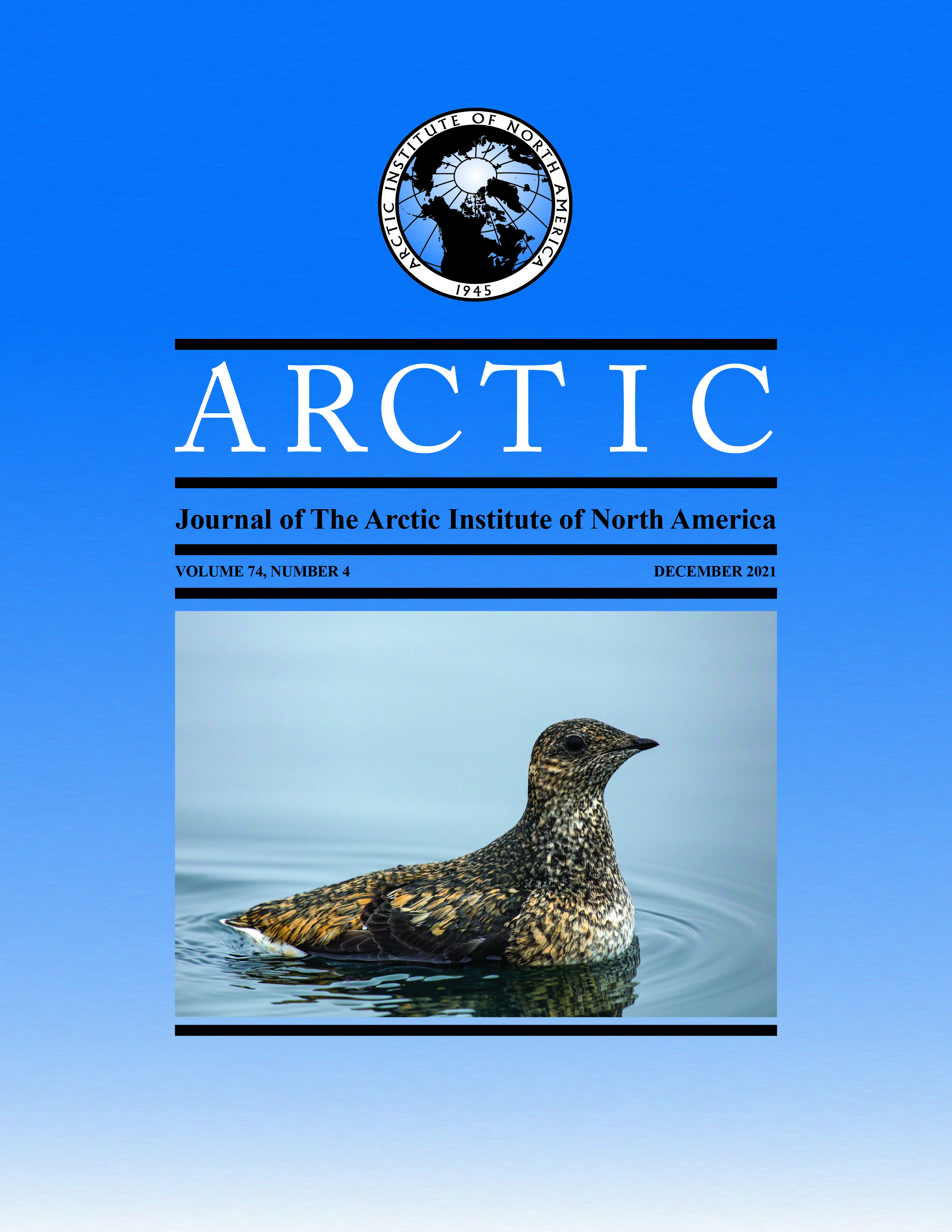Kittlitz’s Murrelet Seasonal Distribution and Post-breeding Migration from the Gulf of Alaska to the Arctic Ocean
DOI:
https://doi.org/10.14430/arctic73992Keywords:
Kittlitz’s Murrelet; Brachyramphus brevirostri; satellite tracking; Argo; movement ecology; migration; seabird; Gulf of Alaska Bering Sea; Chukchi Sea; ArcticAbstract
Kittlitz’s Murrelets (Brachyramphus brevirostris) nest during summer in glaciated or recently deglaciated (post-Wisconsin) landscapes. They forage in adjacent marine waters, especially those influenced by glacial meltwater. Little is known of their movements and distribution outside the breeding season. To identify post-breeding migrations of murrelets, we attached satellite transmitters to birds (n = 47) captured at sea in the Gulf of Alaska and Aleutian Islands during May – July 2009 – 15 and tracked 27 birds that migrated from capture areas. Post-breeding murrelets migrated toward the Bering Sea, with short periods of movement (median 2 d) separated by short stopovers (median 1 d). Travel speeds averaged 79.4 km d-1 (83.5 SD, 449.1 maximum). Five Kittlitz’s Murrelets tagged in Prince William Sound in May migrated to the Bering Sea by August and four continued north to the Arctic Ocean, logging 2500 – 4000 km of travel. Many birds spent 2‒3 weeks with little movement along coasts of the Alaska Peninsula or eastern Bering Sea during late August through September, also the pre-basic molt period. Ship-based surveys, many of which were conducted concurrently with our telemetry studies, confirmed that substantial numbers of Kittlitz’s Murrelets migrate into the Arctic Ocean during autumn. They also revealed that some birds spend winter and spring in the Bering Sea in association with ice-edge, polynya, or marginal ice zone habitats before returning to summer breeding grounds. We conclude that this species is best characterized as a sub-Arctic and Arctic species, which has implications for future risk assessments and threat mitigation.
Downloads
Downloads
Published
Issue
Section
License
Copyright (c) 2021 ARCTIC

This work is licensed under a Creative Commons Attribution 4.0 International License.


